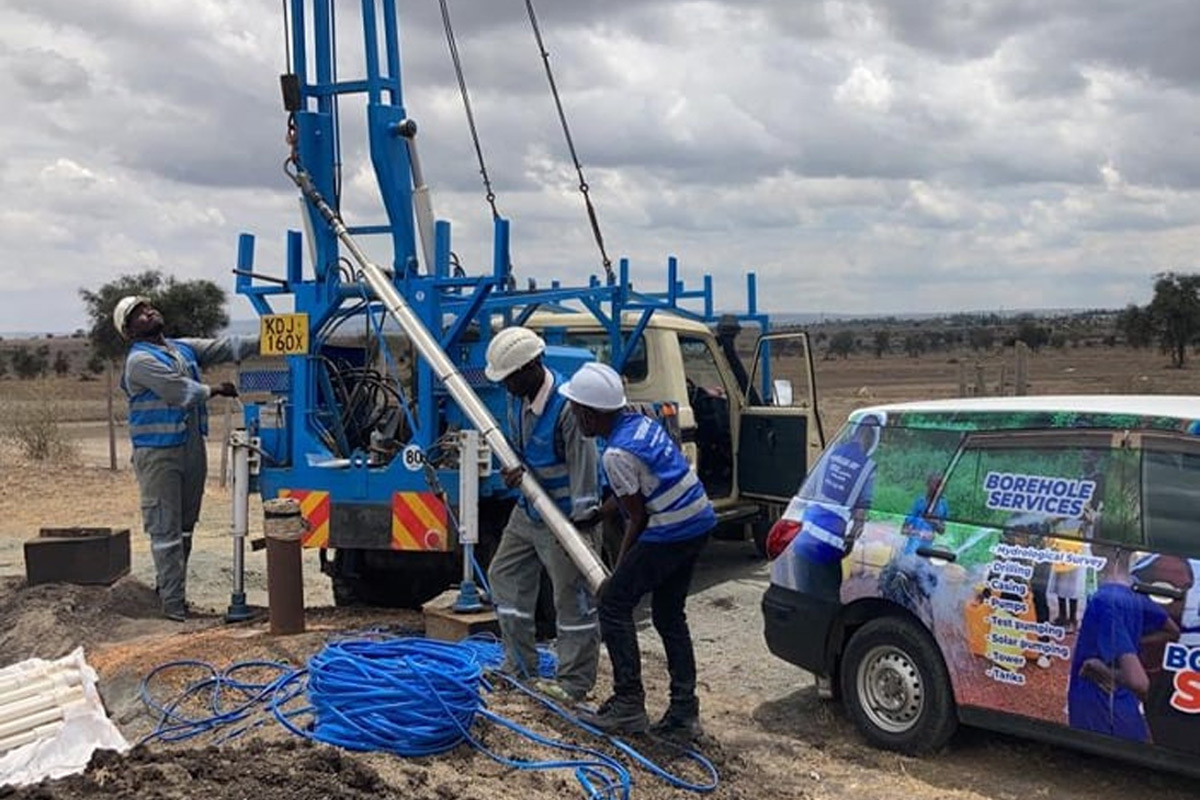How Borehole Equipping Transforms Drilled Wells into Sustainable Water Sources
Equipping a borehole is the final phase before your borehole can begin supplying water. At Kisima Well Drillers, we equip boreholes based on detailed recommendations from the test pumping report, ensuring the system is tailored to your water needs. The cost of equipping normally varies between Ksh 200,000 to Ksh 850,000.
What is Borehole Equipping?
Borehole equipping involves installing all necessary components that allow for the extraction, transport, and storage of water. These include pumps, electrical systems, storage tanks, pipes, and other components. The design and components depend on the results of the test pumping process, which ensures the system is efficient and tailored to the yield and sustainability of the borehole.
Why Equipping Is Important:
- Efficient Water Delivery: Ensures your borehole can deliver water at the correct flow rate and pressure.
- Energy-Efficient Systems: Helps design a system that reduces operational costs, especially with the inclusion of solar-powered systems.
- Long-Term Sustainability: Equips the borehole to meet your water needs over the long term, preventing wear and tear from inefficient systems.
- Compliance: Required for borehole registration with the Water Resources Authority (WRA) and ensures legal compliance.
Key Components of Borehole Equipping:
- Submersible Pump: A high-efficiency pump designed for deep-water extraction. Sizing depends on test pumping data, depth, and yield.
- Pump Motor: A motor that powers the pump. We recommend energy-efficient motors to reduce operational costs.
- Control Panel: A control system that manages the pump operation, ensuring it runs safely and efficiently.
- Piping and Plumbing: Pipes to carry water from the borehole to the storage tanks or distribution points. The size of the pipes is determined based on the yield and flow rate from the test pumping report.
- Water Storage Tanks: Tanks to store the water for future use. The size of the tank depends on the water requirements and daily usage of the site.
- Solar Power System (Optional): Solar panels, batteries, and inverters to power the borehole system. This is an environmentally friendly and cost-effective alternative to grid electricity, particularly in remote areas. Solar structures and components are designed based on energy consumption needs.
- Solar Structure and Inverters: Solar panel mounting structures and inverters are installed to convert solar power into usable electricity. We size the system to ensure it meets the pump's energy needs efficiently.
Cost Breakdown:
The cost of equipping your borehole depends on various factors, including the depth, location, and specific water requirements. As mentioned, the range for borehole equipping typically falls between Ksh 200,000 and Ksh 850,000. Here’s a breakdown of what affects the cost:
- Depth: Deeper boreholes require more powerful pumps and motors, which increases the cost.
- Location: Remote locations may require additional infrastructure, such as solar power systems, and higher transportation costs.
- Water Demand: A higher water demand will require larger pumps, larger storage tanks, and possibly a more complex system.
- Test Pumping Report: The test pumping report plays a crucial role in determining the exact pump specifications, tank size, and power requirements, all of which influence the overall cost.
Why Choose Kisima Well Drillers for Borehole Equipping?
At Kisima Well Drillers, we ensure that every borehole is equipped with precision. Our team of experts uses the data from your test pumping report to design a water system that matches your needs. Whether you're interested in a traditional electric-powered system or a solar-powered solution, we tailor every system to your specific site conditions, ensuring reliable, long-term water supply.
Don’t compromise on water access. Let Kisima Well Drillers equip your borehole with the right system for optimal performance.
Contact us today for a detailed assessment and a customized quote based on your site’s test pumping results and equipping needs.

